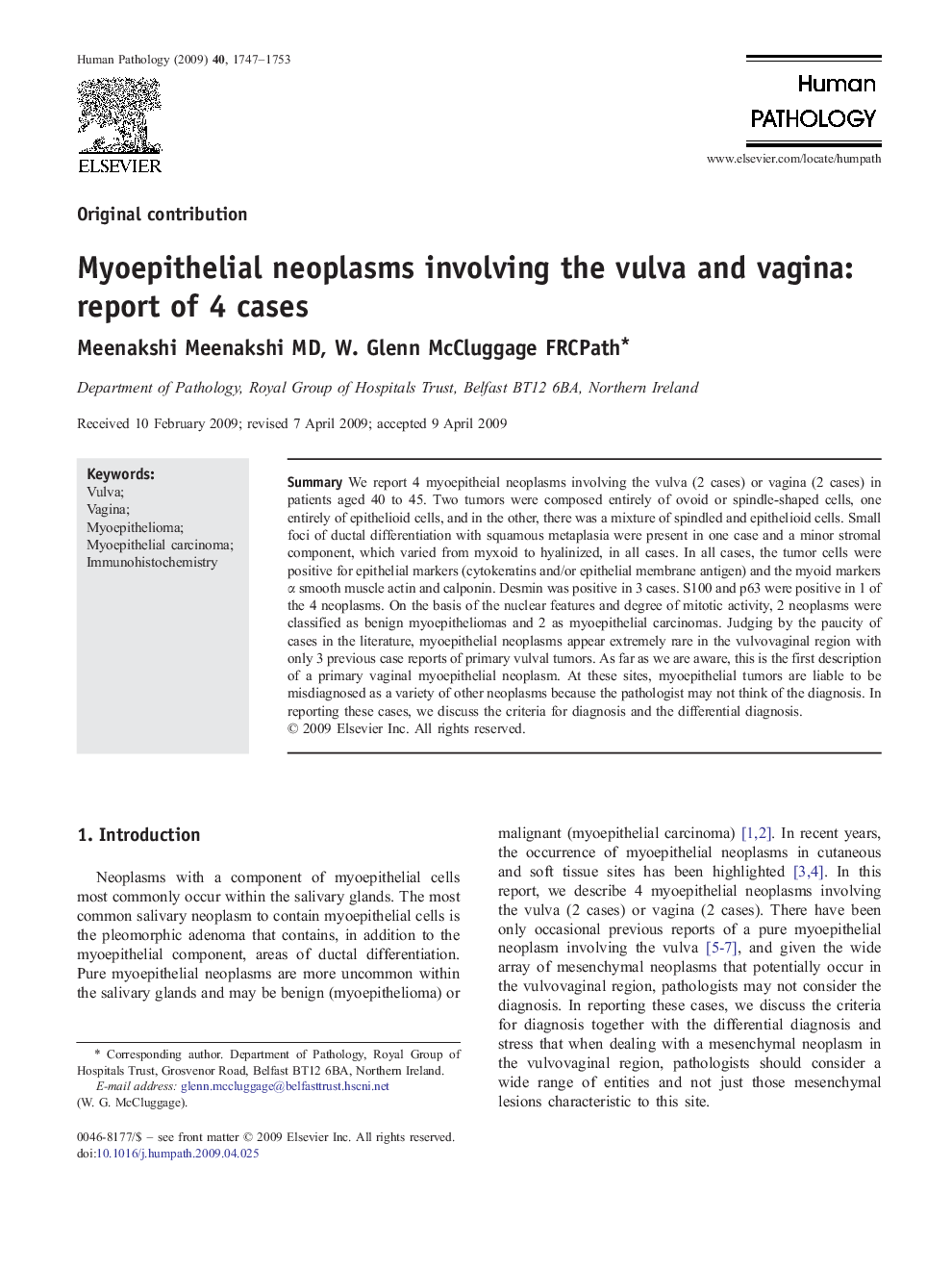| Article ID | Journal | Published Year | Pages | File Type |
|---|---|---|---|---|
| 4133361 | Human Pathology | 2009 | 7 Pages |
SummaryWe report 4 myoepitheial neoplasms involving the vulva (2 cases) or vagina (2 cases) in patients aged 40 to 45. Two tumors were composed entirely of ovoid or spindle-shaped cells, one entirely of epithelioid cells, and in the other, there was a mixture of spindled and epithelioid cells. Small foci of ductal differentiation with squamous metaplasia were present in one case and a minor stromal component, which varied from myxoid to hyalinized, in all cases. In all cases, the tumor cells were positive for epithelial markers (cytokeratins and/or epithelial membrane antigen) and the myoid markers α smooth muscle actin and calponin. Desmin was positive in 3 cases. S100 and p63 were positive in 1 of the 4 neoplasms. On the basis of the nuclear features and degree of mitotic activity, 2 neoplasms were classified as benign myoepitheliomas and 2 as myoepithelial carcinomas. Judging by the paucity of cases in the literature, myoepithelial neoplasms appear extremely rare in the vulvovaginal region with only 3 previous case reports of primary vulval tumors. As far as we are aware, this is the first description of a primary vaginal myoepithelial neoplasm. At these sites, myoepithelial tumors are liable to be misdiagnosed as a variety of other neoplasms because the pathologist may not think of the diagnosis. In reporting these cases, we discuss the criteria for diagnosis and the differential diagnosis.
